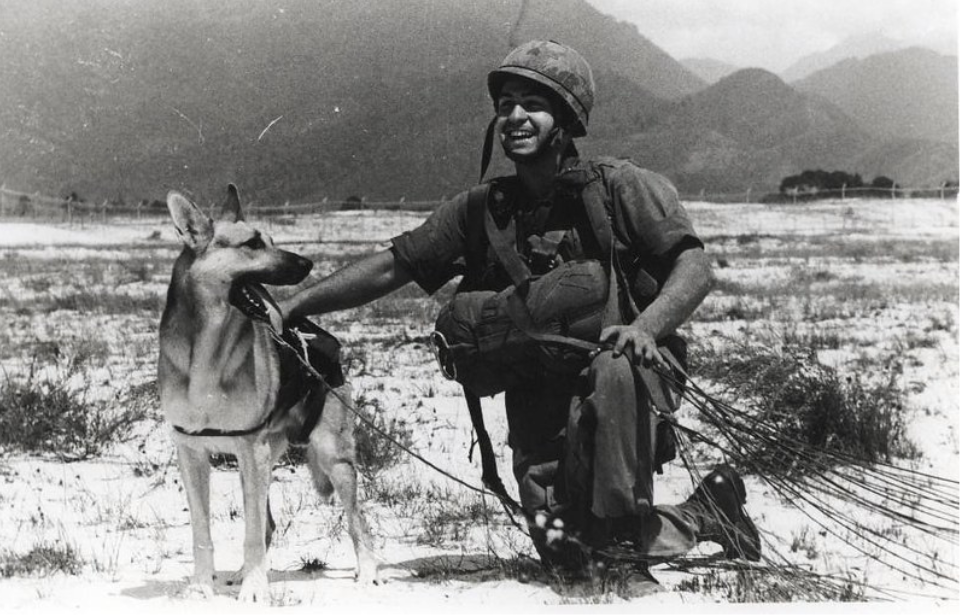
Among the many valiant actors of the Vietnam War were war dogs, courageous canines who played an indispensable role in the conflict. Trained as sentry, scout and tracking animals, they displayed an uncanny ability to sniff out danger and offered vital support to their human handlers. Delve into the incredible stories of these heroes and how they were credited with lowering the American death toll by around 10,000.
Not the first war dogs
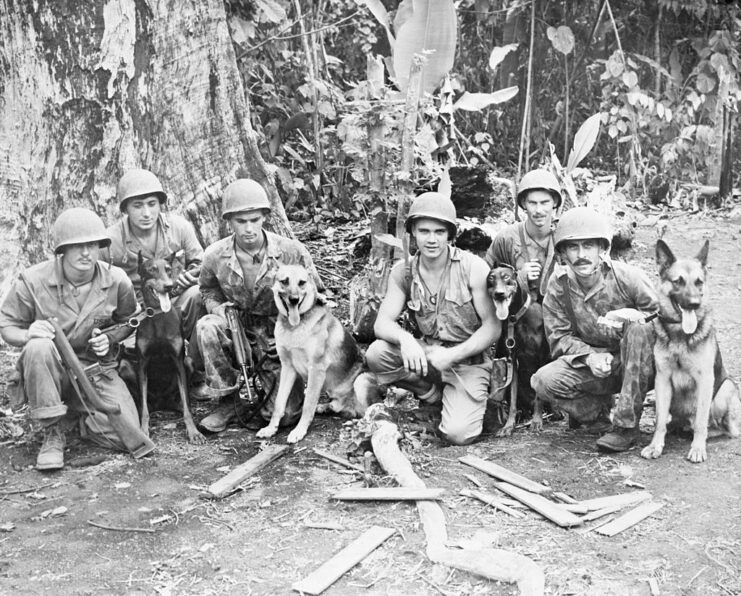
American servicemen and their dogs awaiting their next assignment in a Bougainville jungle clearing, 1944. (Photo Credit: Bettmann / Getty Images)
Their implementation was considered a success, so when the Vietnam War broke out, the US military, yet again, put together K9 units. Numbers prior to 1968 don’t exist, but between then and the end of the conflict, 5,000 dogs were put into service, with approximately 10,000 servicemen working as their handlers. Unlike the troops who finished their tours and returned Stateside, these animals remained in Vietnam, where they were passed on to different handlers.
Use as tracking dogs in Vietnam
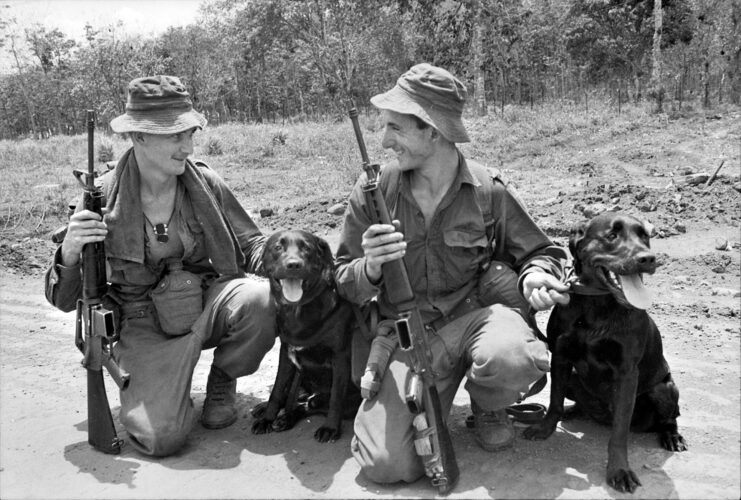
Australian servicemen with their tracking dogs, 1967. (Photo Credit: Bryan Campbell / Australian War Memorial / Wikimedia Commons / Public Domain)
One breed of dog used in Vietnam was the Labrador Retriever, which served mainly in tracker roles. Their training meant they could alert their handlers to snipers, tripwires and weapons caches. Rick Claggett, a veteran of the war, explained that they were excellent at following blood trails. If troops were looking for an injured enemy or missing personnel, the Lab teams, made up of the dog, its handler, a cover man, the team leader and a visual tracker, were called.
Labs were picked specifically over other tracking dogs, like Beagles and Bloodhounds, because they were significantly quieter than these other breeds.
The Australians created their own K9 units made up of 11 shelter dogs adopted from Sydney. Named after Roman emperors, they were expected to serve in Vietnam for three years. Although it seems that they served with US troops to a degree, it was certainly German Shepherds that made up the bulk of the Aussies’ war dogs.
Sentry and scouting duties
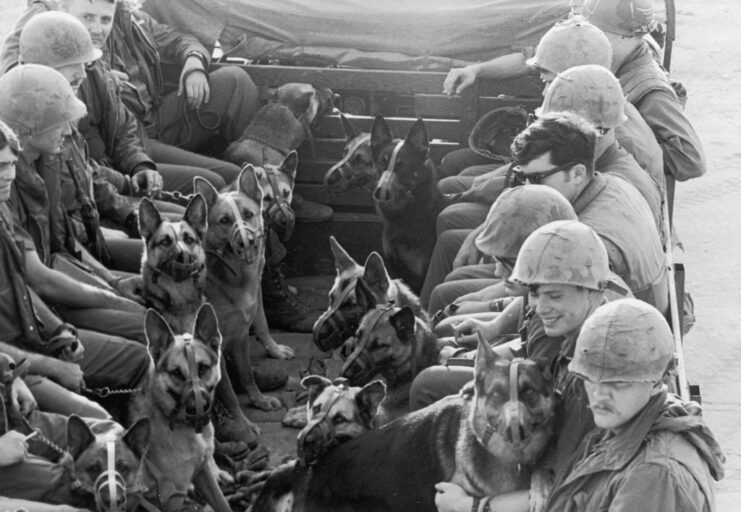
Muzzled sentry dogs and their handlers returning to their kennels and barracks after patrolling the perimeter of the Marble Mountain supply and communications center outpost in Đà Nẵng, 1969. (Photo Credit: R.A. Elder / Hulton Archive / Getty Images)
War dogs in Vietnam were extremely versatile; they conducted sentry and scouting duties, mining and tunneling, and even some tracking. Rick Claggett worked with Big Boy, one of the canine scouts. He explained that their role was to lead the patrol through the field while the dog tried to scent booby traps and ambushes. As the first man through, it was an incredibly dangerous job with, according to him, the third highest mortality rate in the war.
Sentry dogs walked the perimeters of US outposts and acted as the first line of defense against the enemy. German Shepherds were also used on water patrols, trained to detect enemy soldiers hidden below the surface, waiting to attack amphibious craft. These well-trained teams soon became the target of Viet Cong guerrillas, who offered a bounty for killing a dog or their handler and started to attack their kennels to make this happen regularly.
Nemo A534
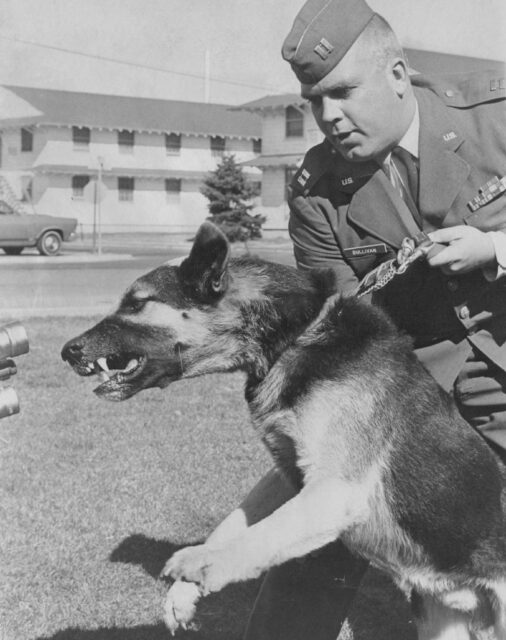
Nemo A534 and Capt. Robert Sullivan during a demonstration in Denver, Colorado, 1967. (Photo Credit: The Denver Post / Getty Images)
The bonds forged between these partners were truly remarkable. There are many stories of this, with perhaps none more famous than that of Nemo A534 and his handler, Capt. Robert Throneburg.
On December 4, 1966, while stationed at Tan Son Nhut Air Base, the Viet Cong attacked. During their patrol, Nemo alerted Throneburg to a group hidden nearby. The pair attacked, killing two enemy fighters, but were soon injured themselves. Nemo was shot under his right eye, with the bullet exiting through his mouth, while Throneburg was shot through his left shoulder twice.
Despite being seriously injured, the dog crawled onto his handler’s body, where he waited until medics could arrive – he wouldn’t let anyone else near him. Throneburg received the Bronze Star with V and two Purple Hearts, while Nemo was retired and sent back to the United States, where he served as a recruiting dog until his death.
Man’s best friend
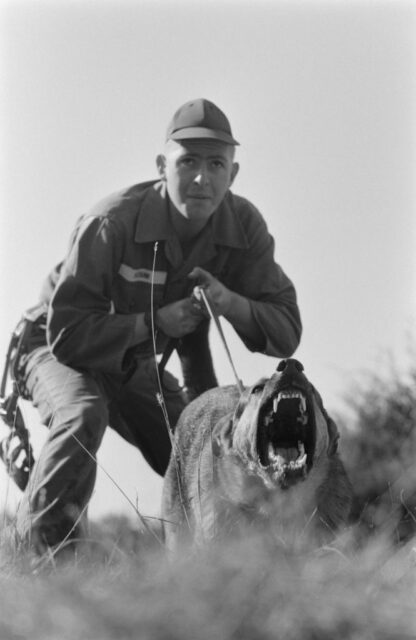
Airman restraining a German Shepherd undergoing sentry training at Lackland Air Force Base, Texas, 1965. (Photo Credit: Pix / Michael Ochs Archives / Getty Images)
These dog/handler teams were invaluable to the war effort in Vietnam. They were credited with saving the lives of around 10,000 servicemen, thanks to their various roles in the conflict. James Mulligan handled scout dog Rickey, who “never walked our patrol into an ambush or any booby traps. He alerted on 45 ambushes, five in one day.”
While these actions were appreciated by the men that served alongside them, these dogs weren’t made a priority when the war came to an end. Of the roughly 5,000 that served, around 232 were killed in action (KIA) and another 200 were assigned to posts outside of the US. The remainder were either left in the hands of the Vietnamese or abandoned. At least 2,000 were simply euthanized.
The US government viewed them as “equipment” and didn’t want to fund their trips home. Having built such strong bonds, many soldiers wanted to bring their comrades back to the US with them, but were still told no, despite repeated appeals to Congress and the press.
More from us: Battle of Khe Sanh: The Siege That Shook America
The service performed by these canines never went forgotten, and there are countless interviews with veteran handlers who still remember their partnerships fondly. In 2019, they were publicly remembered when the Vietnam War Dog Team Memorial was unveiled at Motts Military Museum, Inc. in Ohio.





